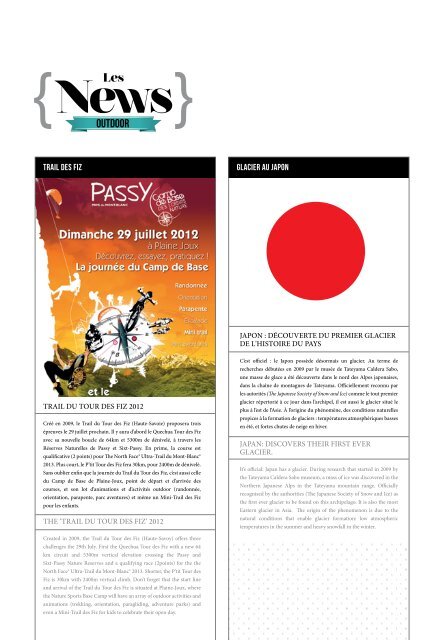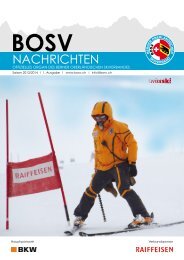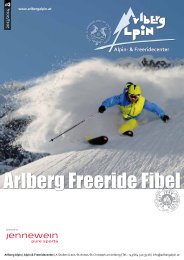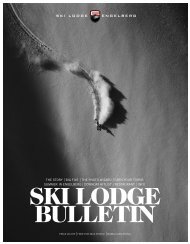Hiking Born to be Wild
« En route, le mieux c'est de se perdre. Lorsqu'on s'égare, les projets font place aux surprises et c'est alors, mais alors seulement, que le voyage commence. » “When travelling, the best thing to do is to get lost, when you’re lost, plans are replaced by surprises and it’s then, and only then, that the journey really begins.” Nicolas Bouvier.
« En route, le mieux c'est de se perdre. Lorsqu'on s'égare, les projets font place aux surprises
et c'est alors, mais alors seulement, que le voyage commence. »
“When travelling, the best thing to do is to get lost, when you’re lost, plans are replaced by surprises
and it’s then, and only then, that the journey really begins.”
Nicolas Bouvier.
Create successful ePaper yourself
Turn your PDF publications into a flip-book with our unique Google optimized e-Paper software.
TRAIL DES FIZ<br />
TRAIL DU TOUR DES FIZ 2012<br />
Créé en 2009, le Trail du Tour des Fiz (Haute-Savoie) proposera trois<br />
épreuves le 29 juillet prochain. Il y aura d’abord le Quechua Tour des Fiz<br />
avec sa nouvelle boucle de 64km et 5300m de dénivelé, à travers les<br />
Réserves Naturelles de Passy et Sixt-Passy. En prime, la course est<br />
qualicative (2 points) pour e North Face® Ultra-Trail du Mont-Blanc®<br />
2013. Plus court, le P’tit Tour des Fiz fera 30km, pour 2400m de dénivelé.<br />
Sans oublier enn que la journée du Trail du Tour des Fiz, c’est aussi celle<br />
du Camp de Base de Plaine-Joux, point de départ et d’arrivée des<br />
courses, et son lot d’animations et d’activités outdoor (randonnée,<br />
orientation, parapente, parc aventures) et même un Mini-Trail des Fiz<br />
pour les enfants.<br />
Crédit pho<strong>to</strong>s : WWF Jean Franco<br />
Les<br />
OUTDOOR<br />
THE ‘TRAIL DU TOUR DES FIZ’ 2012<br />
Created in 2009, the Trail du Tour des Fiz (Haute-Savoy) oers three<br />
challenges the 29th July. First the Quechua Tour des Fiz with a new 64<br />
km circuit and 5300m vertical elevation crossing the Passy and<br />
Sixt-Passy Nature Reserves and a qualifying race (2points) for the the<br />
North Face® Ultra-Trail du Mont-Blanc® 2013. Shorter, the P’tit Tour des<br />
Fiz is 30km with 2400m vertical climb. Don’t forget that the start line<br />
and arrival of the Trail du Tour des Fiz is situated at Plaine-Joux, where<br />
the Nature Sports Base Camp will have an array of outdoor activities and<br />
animations (trekking, orientation, paragliding, adventure parks) and<br />
even a Mini-Trail des Fiz for kids <strong>to</strong> celebrate their open day.<br />
GLACIER AU JAPON<br />
JAPON : DÉCOUVERTE DU PREMIER GLACIER<br />
DE L'HISTOIRE DU PAYS<br />
C’est ociel : le Japon possède désormais un glacier. Au terme de<br />
recherches débutées en 2009 par le musée de Tateyama Caldera Sabo,<br />
une masse de glace a été découverte dans le nord des Alpes japonaises,<br />
dans la chaîne de montagnes de Tateyama. Ociellement reconnu par<br />
les au<strong>to</strong>rités (e Japanese Society of Snow and Ice) comme le <strong>to</strong>ut premier<br />
glacier réper<strong>to</strong>rié à ce jour dans l’archipel, il est aussi le glacier situé le<br />
plus à l’est de l’Asie. À l’origine du phénomène, des conditions naturelles<br />
propices à la formation de glaciers : températures atmosphériques basses<br />
en été, et fortes chutes de neige en hiver.<br />
JAPAN: DISCOVERS THEIR FIRST EVER<br />
GLACIER.<br />
Crédit pho<strong>to</strong>s : WWF Jean Franco<br />
It’s ocial: Japan has a glacier. During research that started in 2009 by<br />
the Tateyama Caldera Sabo museum, a mass of ice was discovered in the<br />
Northern Japanese Alps in the Tateyama mountain range. Ocially<br />
recognised by the authorities (e Japanese Society of Snow and Ice) as<br />
the rst ever glacier <strong>to</strong> <strong>be</strong> found on this archipelago. It is also the most<br />
Eastern glacier in Asia. e origin of the phenomenon is due <strong>to</strong> the<br />
natural conditions that enable glacier formation: low atmospheric<br />
temperatures in the summer and heavy snowfall in the winter.

















